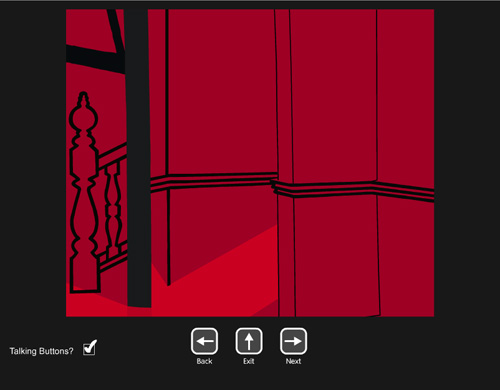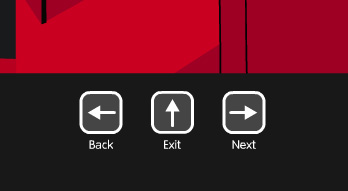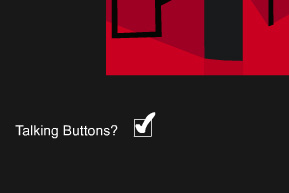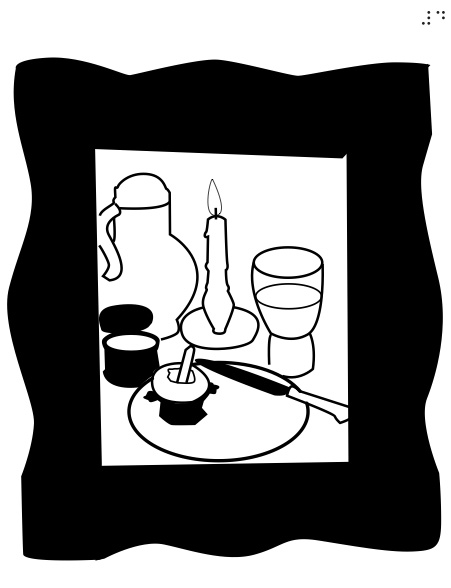There are two options for navigating the artworks within iMap. If you have some useful sight, or if you are a sighted user, then we recommend you explore the artworks using the animations and audio. The animations highlight and simplify key aspects of the works. Biographical and orientation information is left as text and can be enlarged or accessed via screen-reader technology. If you are a blind user, or are assisting a blind user, we recommend you explore the artworks using the raised drawings and audio. A transcript of the audio recorded for each artwork is also available.
i-Map
User Guide
Using Animations
Our animation and audio treatments are designed for users with some useful sight. Each animated sequence takes the user through an artwork step-by-step, avoiding overwhelming detail by building up the elements of the image slowly and gradually.
The animations require a Flash player. Almost all browsers are now equipped with this, but you may still wish to ensure you have the latest version installed.

Navigating the Animations
You can navigate through the animations in two ways, using either your keyboard or a mouse. If you are a keyboard user, move forward and back through the animation using the tab key to access the buttons at the bottom of the animation. If you are using a browser other than Internet Explorer for Windows, you may need to click on the animation to activate the keyboard.
If you are using a mouse, but still require additional help with navigation, the buttons are set to ‘speak’ their function when the mouse passes over them. You can switch the talking buttons option off by clicking the checkbox.


Using Raised Images
Our raised image and audio treatments of the artworks utilise a combination of online and offline technologies, so some preparation is required.
i-Map’s raised images, downloadable on this page in PDF format, are designed to be created using swell paper and a heat fusing machine such as Zy-Fuse. The image to be raised needs to be printed or photocopied onto the swell paper and passed through the machine. The heat is absorbed by the black areas of the image, and the chemical reaction that it produces causes those areas to rise and swell.
A number of blind clubs and associations have this equipment and may be able to create the raised images for you. The RNIB also runs a Raised Images service through its Businesslink team in Peterborough. If you send print-outs of the images to them they will raise them on swell paper and return them, usually within five working days. For more information and for details of cost, please call Businesslink on 01733 375 370 or email on businesslink@rnib.org.uk. The address to send your images to is as follows:
RNIB Peterborough
Businesslink
Tactile Images
PO Box 173
Peterborough PE2 6WS
Telephone: 01733 375 370
Download PDF
Download the set of Raised Images (PDF)
Getting Started
Once you have your set of raised images you can start using them to explore i-Map’s artworks. As you will be using them in conjunction with your computer, make sure you have comfortable access to both before you begin. Don’t worry, you won’t be required to operate your computer and touch the raised images simultaneously.
The raised image and audio treatments of the artworks use audio files in the MP3 format. MP3 files may be played by a range of software.
Each raised image and audio page has been laid out as simply as possible, with two audio clips corresponding to each raised image. The first clip provides orientation, helping you to get you bearings on the raised image in front of you. The second clip is a descriptive narration, essentially a description of the artwork itself, rather than the raised image, which includes art historical context.
For sighted users, such as teachers and helpers, a thumbnail of each raised image can be seen to the left of the audio clips if you have your accessibility options set to default or large text.






